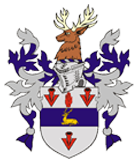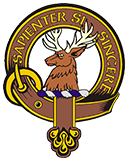Battles of Invernhaven And Perth – 1300s
We’ll begin with the reigning champ: the Davidson vs. MacPherson tale. We have already discussed that history shows an increasingly tighter bond forming among the Chattan Confederation clans after Invernahavon, and it is, therefore, unlikely that the Clans Davidson and MacPherson continued to feud after the sound defeat of the Camerons at MacPherson hands. Nevertheless, there is a more solid and supportable reason we can dismiss conflict between the kindred families. Although many history books state that “the Davidsons were of considerable number” prior to 1396, 14 it must be recognized and admitted – as much as we may not want to – that we were of little overall importance politically at that time, and though potentially capable of mustering a respectable force of arms, would not have had the strength to fight the MacPhersons singly. Why else would we have been so outnumbered and our forces annihilated by their removal at Invernahavon. We certainly could not have fought the Camerons on our own!
A similar claim can be made for the MacPhersons. They outnumbered us or at least matched us man-for-man, but were of somewhat little import in the political arena at this stage of history themselves. In contrast, Clan MacIntosh and, moreover, the Chattan Confederation, even prior to official incorporation, were very involved in the affairs of State, and could field an army strong enough to dissuade even government entities from positions and “suggestions” not agreed to. Clan Chattan would have had the political strength, jurisdiction and right of magistrate, and the strength of arms to settle any dispute between its cadet members. Why, then, would The MacIntosh have needed to seek aid from the Crown? Given our size, relative dependence upon the rest of the Clan Chattan after the losses at Invernahavon, and lack of political power, I think we can state reliably that though we were almost certainly involved 15 in the Battle at North Inch, we were not there on our own.
The argument concerning Clan Davidson versus the rest of Clan Chattan, however well publicized in “the literature,” is one I will not linger on. It’s a tale that puts us in the place of the Camerons, if viewed from the Allison version of events, and there is a very simple reason it cannot be trusted. That is, the very idea we could be so wounded at Invernahavon as to reduce our numbers and political strength only to turn around and challenge a confederation of kindred clans who outnumbered us 10 to 1 or more and live to tell about it is ludicrous in and of itself! Aside from that, we have just established that we would not have been important enough to warrant Coronal attention and adjudication and would have come under the magistrate of The MacIntosh, who could very easily have had us erased from history. Since you and I are debating our history at present, we can assume that didn’t happen. It also seems unlikely that we could fight against such a force as Chattan could muster, lose, and yet remain in such good graces thereafter that we were included in the aforementioned Bond of Union and continued our successful articulations with the Confederate clans. Enough said.
As to the Davidson versus Cumming argument, we can again be short and to the point. In fact, we can probably summarily dismiss the involvement of the Cummings at the North Inch entirely. There is clear evidence – and Allison refers to it 16 – that there were tensions between the Cummings and Clan Chattan prior to the North Inch battle, though these came in the form of quarrels between elements of the Confederation (and there is no reference to the Davidsons being one of the antagonists) and the Cummings and not the Clan Chattan as a whole. There is, however, no evidence that armed conflict between the two major Clans erupted prior to 1424. It would be strange to have the first mention of formal conflict between Chattan and Cumming appear after the Battle of North Inch if indeed this major historical event involved the two.
There is inference that still other clans – ones not associated with Davidson, MacPherson, Chattan, and even Cameron – could have been the participants at the North Inch, and we should address that point here. As stated above, the Cumming connection cannot be valid unless every historian – including those of the present day – is incorrect about specific dates of battles and about their outcomes; almost all agree, and there are only minor variations in fact for those accounts that do differ. Since we are looking for evidence that is more solid and that fits logically into the overall North Inch equation, let us once again dismiss the Cummings’ participation. The Allison history fits with every aspect of our timeline and what is agreed upon historically; it is logical in its order and its details. However, it must be noted that the NTS does not openly dispute the conclusions of some who have argued that the Clans Kay and Quehle are those who fought at the North Inch.

